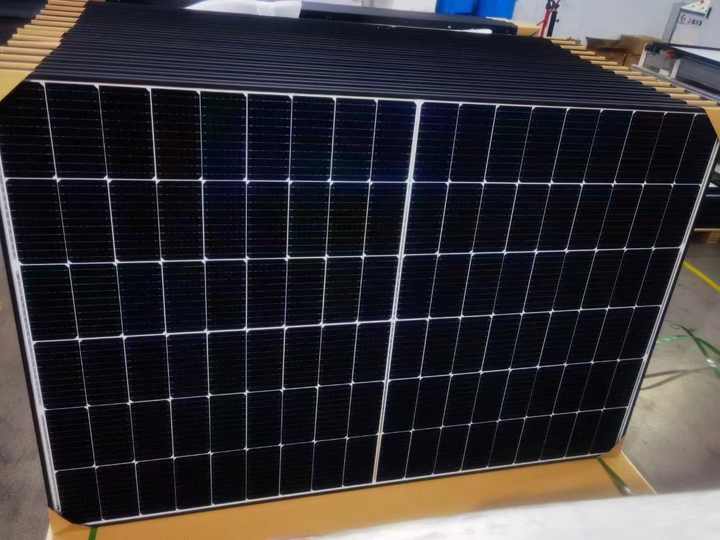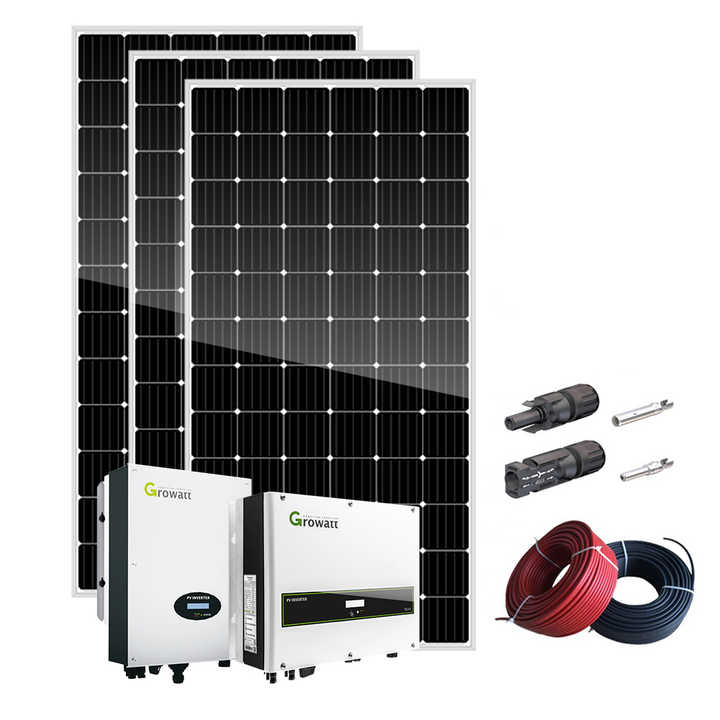Using a regular inverter in a grid-tied solar setup is not a good idea. Regular inverters are designed for off-grid systems and lack the necessary features for safe and efficient grid connection. They can’t synchronize with the grid’s electricity or feed excess energy back. This means you’ll miss out on benefits like net metering, where you can earn credits for surplus energy. Also, it could lead to safety risks and legal issues, as it might not comply with local electrical codes. For grid-tied systems, it’s always best to use a grid-tied inverter to ensure safety, efficiency, and compliance.

What is on grid-tied solar inverter?
An on-grid solar inverter plays a crucial role in solar power systems. It changes the solar panels’ direct current (DC) into alternating current (AC). This AC power is the type we use in our homes and offices. What makes this inverter special is its ability to connect with the electricity grid. This connection allows excess energy to flow back into the grid. Homeowners can often receive credits for this excess power, reducing their electricity bills. Additionally, on-grid inverters ensure a continuous power supply, even when solar panels don’t produce enough energy. This happens by drawing needed power from the grid. They’re cost-effective and eco-friendly, making them a smart choice for solar enthusiasts.
What is the difference between a regular inverter and a grid-tied inverter for solar systems?
When diving into the world of solar energy, understanding the difference between a regular inverter and a grid-tied inverter is key. Both are important, but they serve different purposes in solar systems.
A regular inverter, often called a standalone or off-grid inverter, is a fundamental part of off-grid solar systems. It converts direct current (DC) from solar panels or batteries into alternating current (AC), the type of electricity we use in our homes. This type of inverter is perfect for remote locations without access to the electricity grid. It relies solely on solar panels and batteries for power, making it ideal for independent operations.
On the other hand, a grid-tied inverter is designed specifically for systems connected to the electricity grid. Like a regular inverter, it converts DC from solar panels into AC. However, its standout feature is its ability to synchronize with the grid’s power. This synchronization allows any excess energy produced by the solar panels to be sent back to the grid. Many homeowners appreciate this feature, as it can earn them credits on their electricity bills through net metering programs.
Can I connect a regular inverter to the grid in a solar system setup?
Connecting a regular inverter to the grid in a solar system setup is not advisable. Regular inverters, designed for off-grid systems, lack the necessary features to safely interact with the grid. They can’t synchronize with the grid’s electricity or feed excess energy back into it. This limitation not only prevents taking advantage of potential energy credits but also poses safety risks. For grid connectivity, you need a grid-tied inverter. It’s specially designed for this purpose, ensuring safe and efficient operation.
What are the risks of using a regular inverter in a grid-tied solar system?
Using a regular inverter in a grid-tied solar system comes with several risks that you should be aware of. Understanding these risks can help you make safer and more effective choices for your solar energy setup.
Safety Hazards
Regular inverters aren’t designed to synchronize with the grid’s power frequency and voltage. This mismatch can create safety hazards, including the risk of electrical fires or damage to your solar equipment. Your first concern should always be safety.
Inefficient Energy Use
Regular inverters don’t optimize the energy transfer to the grid. This inefficiency means you might not be using your solar energy most effectively. Grid-tied inverters, in contrast, ensure that excess energy is efficiently fed into the grid, maximizing your solar investment.
Lack of Net Metering Benefits
One major advantage of grid-tied systems is net metering, where you receive credits for excess energy sent back to the grid. With a regular inverter, you lose this benefit as it cannot send energy back to the grid, leading to potential financial losses.
Legal and Compliance Issues
In many areas, connecting a non-grid-tied inverter to the grid violates local regulations and utility company policies. This can result in fines, disconnection from the grid, or legal challenges.
Potential Grid Interference
Regular inverters might cause interference with the grid’s normal operation. They can disrupt the stability and reliability of the grid, affecting not just your home but potentially your neighborhood too.
Lack of System Monitoring and Control
Grid-tied inverters often come with advanced monitoring systems. These systems help in tracking energy production and consumption. Regular inverters typically lack this capability, making it harder to manage and optimize your solar system’s performance.
Difficulty in Handling Power Outages
Unlike some grid-tied inverters designed to provide power during outages, regular inverters might not have this feature. When you least expect it, this might leave you without electricity.
Warranty and Insurance Issues
Using a regular inverter in a grid-tied setup might void warranties or breach insurance policies. This can lead to additional expenses if repairs or replacements are needed.
While a regular inverter might seem like a cost-effective option, its use in a grid-tied system poses numerous risks. It’s crucial to choose the right inverter that aligns with your system’s needs, local regulations, and safety standards. Investing in the correct equipment not only ensures safety but also maximizes the benefits of your solar system.

What should I consider when upgrading from a regular inverter to a grid-tied inverter for my solar system?
Upgrading from a regular inverter to a grid-tied inverter for your solar system is a significant step. Here are consider to ensure a smooth transition:
Compatibility with Your Solar Panels
Before making the switch, ensure that the grid-tied inverter is compatible with your existing solar panels. Different inverters have different voltage and power requirements. It’s crucial to choose one that matches your solar panels’ output. This ensures your system operates efficiently and avoids potential damage to your equipment.
Local Regulations and Grid Requirements
Each area has specific regulations governing the connection of solar systems to the grid. You must understand and comply with these regulations. This includes getting necessary permits and ensuring your grid-tied inverter meets local grid standards. Failure to comply can lead to legal issues or fines, so it’s vital to do your homework.
Net Metering Policies
One of the advantages of a grid-tied inverter is the potential to benefit from net metering. This policy allows you to send excess solar energy back to the grid in exchange for credits. Check with your local utility company about their net metering policies. Understanding how you can benefit financially will help you make the most of your upgrade.
Installation and Maintenance
Upgrading to a grid-tied inverter often requires professional installation. Look for a qualified and experienced installer to ensure proper setup. Also, consider the maintenance requirements of your new inverter. Some grid-tied inverters come with advanced features like remote monitoring and diagnostics. These features can help in maintaining optimal performance and identifying issues early.
